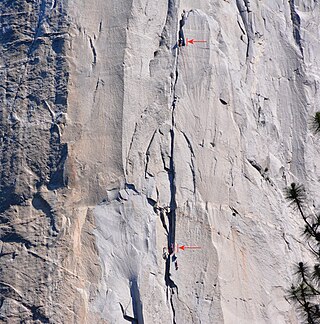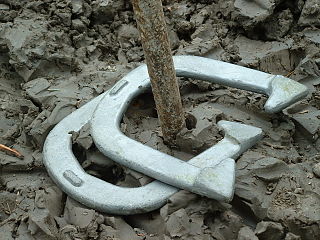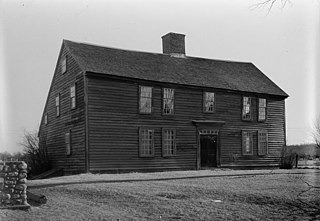A roof is the top covering of a building, including all materials and constructions necessary to support it on the walls of the building or on uprights, providing protection against rain, snow, sunlight, extremes of temperature, and wind. A roof is part of the building envelope.

Thatching is the craft of building a roof with dry vegetation such as straw, water reed, sedge, rushes, heather, or palm branches, layering the vegetation so as to shed water away from the inner roof. Since the bulk of the vegetation stays dry and is densely packed—trapping air—thatching also functions as insulation. It is a very old roofing method and has been used in both tropical and temperate climates. Thatch is still employed by builders in developing countries, usually with low-cost local vegetation. By contrast, in some developed countries it is the choice of some affluent people who desire a rustic look for their home, would like a more ecologically friendly roof, or who have purchased an originally thatched abode.

A ladder is a vertical or inclined set of rungs or steps commonly used for climbing or descending. There are two types: rigid ladders that are self-supporting or that may be leaned against a vertical surface such as a wall, and rollable ladders, such as those made of rope or aluminium, that may be hung from the top. The vertical members of a rigid ladder are called stringers or rails (US) or stiles (UK). Rigid ladders are usually portable, but some types are permanently fixed to a structure, building, or equipment. They are commonly made of metal, wood, or fiberglass, but they have been known to be made of tough plastic.

A tent is a shelter consisting of sheets of fabric or other material draped over, attached to a frame of poles or a supporting rope. While smaller tents may be free-standing or attached to the ground, large tents are usually anchored using guy ropes tied to stakes or tent pegs. First used as portable homes by nomads, tents are now more often used for recreational camping and as temporary shelters.
In music, ear training is the study and practice in which musicians learn various aural skills to detect and identify pitches, intervals, melody, chords, rhythms, solfeges, and other basic elements of music, solely by hearing. Someone who can identify pitch accurately without any context is said to have perfect pitch, while someone who can only identify pitch provided a reference tone or other musical context is said to have relative pitch. Someone that can't perceive these qualities at all is said to be tone deaf. The application of this skill is somewhat analogous to taking dictation in written/spoken language. As a process, ear training is in essence the inverse of reading music, which is the ability to decipher a musical piece by reading musical notation. Ear training is typically a component of formal musical training and is a fundamental, essential skill required in music schools and the mastery of music.

In climbing, a pitch is a section of a climbing route between two belay points, and is most commonly related to the task of lead climbing, but is also related to abseiling. Climbing on routes that require only one pitch is known as single-pitch climbing, and climbing on routes with more than one pitch is known as multi-pitch climbing.

Fir Park Stadium is a football stadium situated in Motherwell, North Lanarkshire, Scotland. The stadium plays host to the home matches of Scottish Premiership club Motherwell and was the temporary home of Gretna for the 2007–08 SPL season. Motherwell moved to the stadium in 1896, previously playing their football at Dalziel Park.

The empennage, also known as the tail or tail assembly, is a structure at the rear of an aircraft that provides stability during flight, in a way similar to the feathers on an arrow. The term derives from the French language verb empenner which means "to feather an arrow". Most aircraft feature an empennage incorporating vertical and horizontal stabilising surfaces which stabilise the flight dynamics of yaw and pitch, as well as housing control surfaces.

A flat roof is a roof which is almost level in contrast to the many types of sloped roofs. The slope of a roof is properly known as its pitch and flat roofs have up to approximately 10°. Flat roofs are an ancient form mostly used in arid climates and allow the roof space to be used as a living space or a living roof. Flat roofs, or "low-slope" roofs, are also commonly found on commercial buildings throughout the world. The U.S.-based National Roofing Contractors Association defines a low-slope roof as having a slope of 3 in 12 (1:4) or less.

Horseshoes is a lawn game played between two people using four horseshoes and two throwing targets (stakes) set in a lawn or sandbox area. The game is played by the players alternating turns tossing horseshoes at stakes in the ground, which are traditionally placed 40 feet (12 m) apart. Modern games use a more stylized U-shaped bar, about twice the size of an actual horseshoe.

Fairfield railway station is a heritage-listed railway station located on the Old Main South line, serving the Sydney suburb of Fairfield. It is served by Sydney Trains' T2 Leppington & Inner West and T5 Cumberland line services. It was designed and built by NSW Government Railways from 1856 to 1891. It is also known as Fairfield Railway Station group. The property was added to the New South Wales State Heritage Register on 2 April 1999.

A saltbox house is a gable-roofed residential structure that is typically two stories in the front and one in the rear. It is a traditional New England style of home, originally timber framed, which takes its name from its resemblance to a wooden lidded box in which salt was once kept.

A lean-to is a type of simple structure originally added to an existing building with the rafters "leaning" against another wall. Free-standing structures open on one or more sides are generally used as shelters.

An agogô is a single or a multiple bell now used throughout the world but with origins in traditional Yoruba and Edo music and also in the samba baterias. The agogô may be the oldest samba instrument and was based on West African Yoruba single or double bells. The agogô has the highest pitch of any of the bateria instruments.

Roof pitch is the steepness of a roof expressed as a ratio of inch(es) rise per horizontal foot, or as the angle in degrees its surface deviates from the horizontal. A flat roof has a pitch of zero in either instance; all other roofs are pitched.

A hayrack is a freestanding vertical drying rack found chiefly in Slovenia. Hayracks are permanent structures, primarily made of wood, upon which fodder for animals is dried, although their use is not limited to drying hay. Other foodstuffs such as field maize are dried on them as well. Although it is a practical structure, a hayrack is often artistically designed and handcrafted and is regarded by Slovenes as a distinctive form of vernacular architecture that marks Slovene identity.

A snow guard is a device used to retain snow and ice from falling from one surface to a lower one; in contemporary usage, they are installed to prevent snow/ice pack from avalanching and damaging people, plants, and property below. They are most commonly installed in multiples or rows on a structure's roof surface, as a form of avalanche control. Snow guards are installed with a specific quantity and pattern based on the shape, size and pitch of the roof to provide the most uniform system of retention possible. Snow guards are not fully intended to completely hold back the snow as this would cause major leak issues when the snow melts. They are however built to separate the snow to allow it to break apart into smaller pieces/sections so that, if they do fall in rising temperatures and thawing conditions, the likelihood of having someone injured by the falling pile of snow is minimized.

A hip roof, hip-roof or hipped roof, is a type of roof where all sides slope downward to the walls, usually with a fairly gentle slope, with variants including tented roofs and others. Thus, a hipped roof has no gables or other vertical sides to the roof.

The Cottage is the oldest home in Thorpe, Surrey, and dates from 1490 when Henry VII was king of England. Built when there was a plentiful supply of timber, it is a substantial timber-framed house with brick panels and during the last 500 years it has evolved and grown to what is now a quintessential English Chocolate Box Cottage.




















